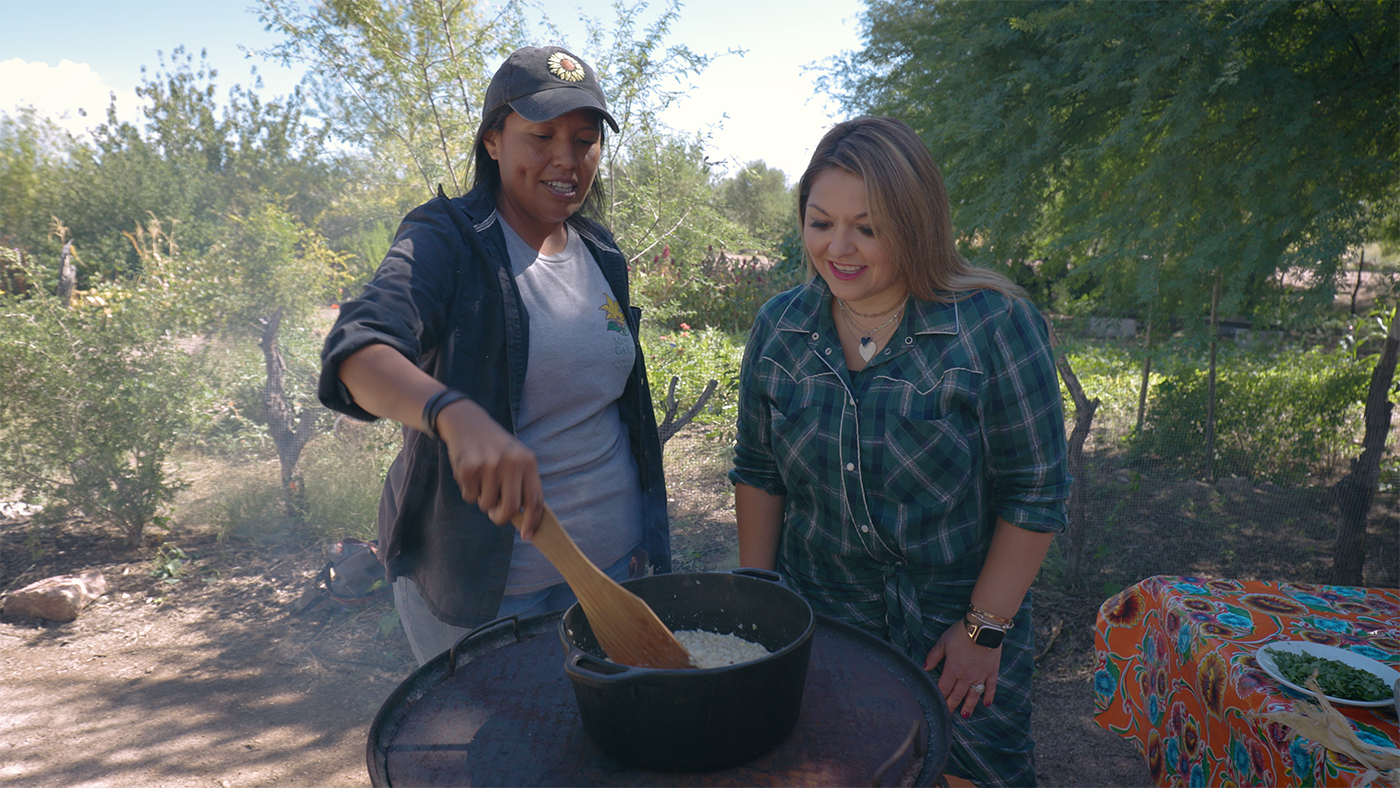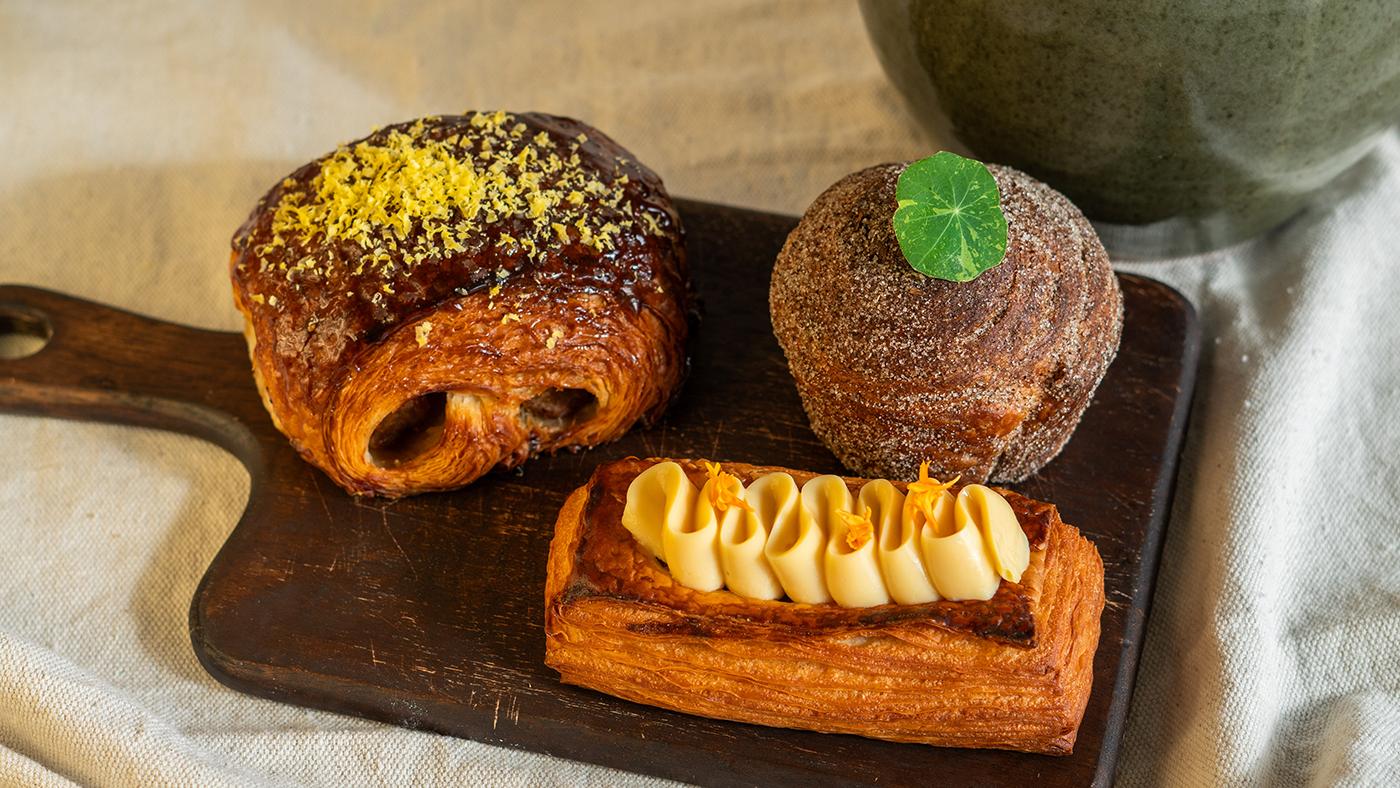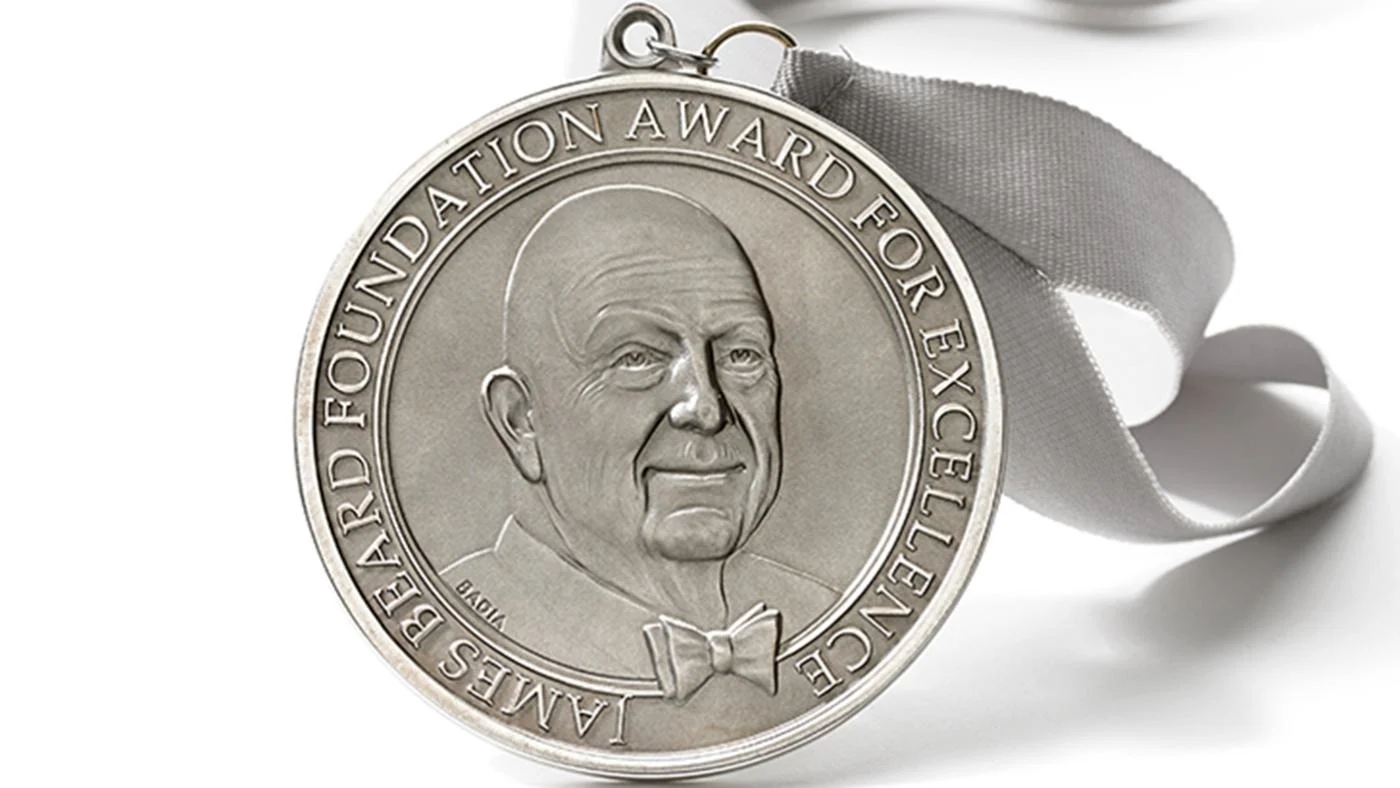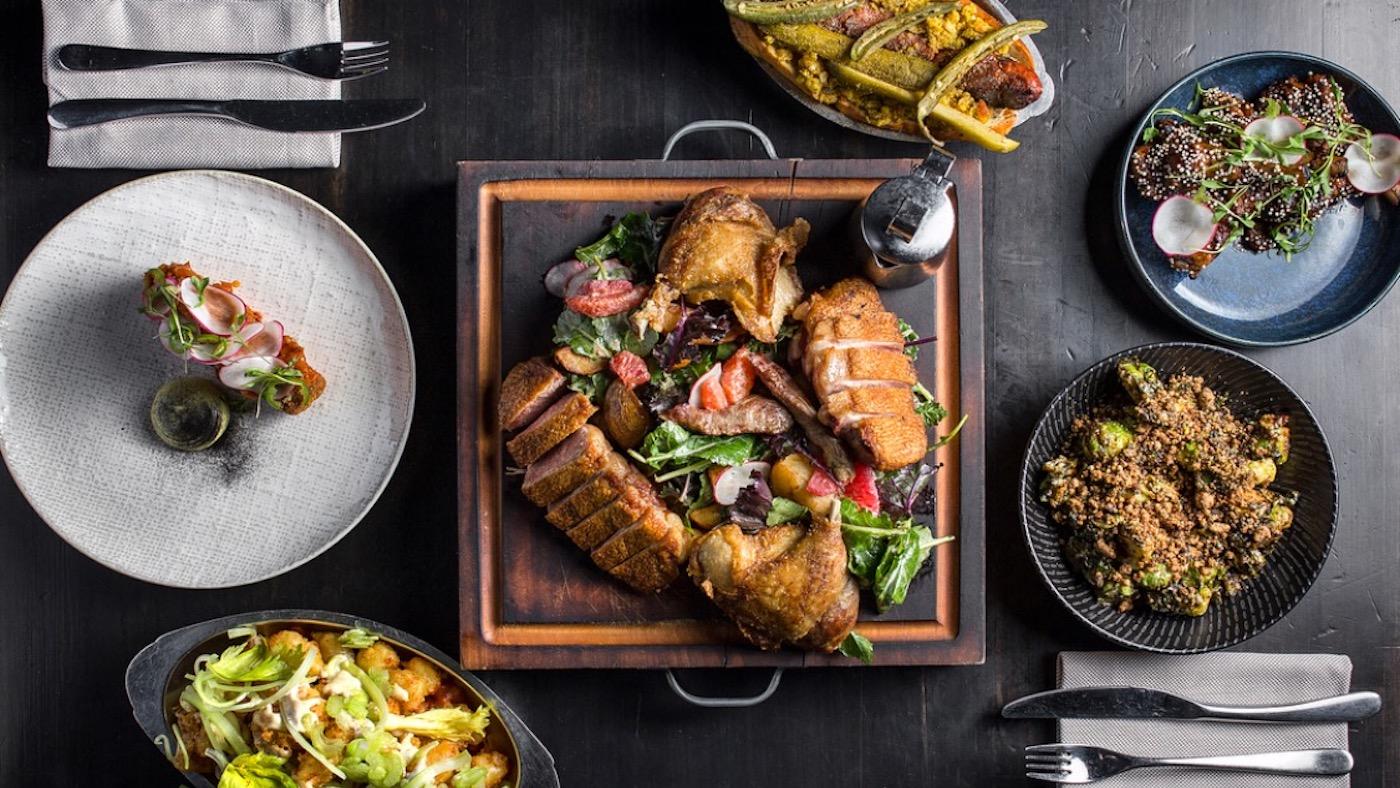Geoffrey Baer Explores Foods Born in Chicago
Geoffrey Baer
January 25, 2022
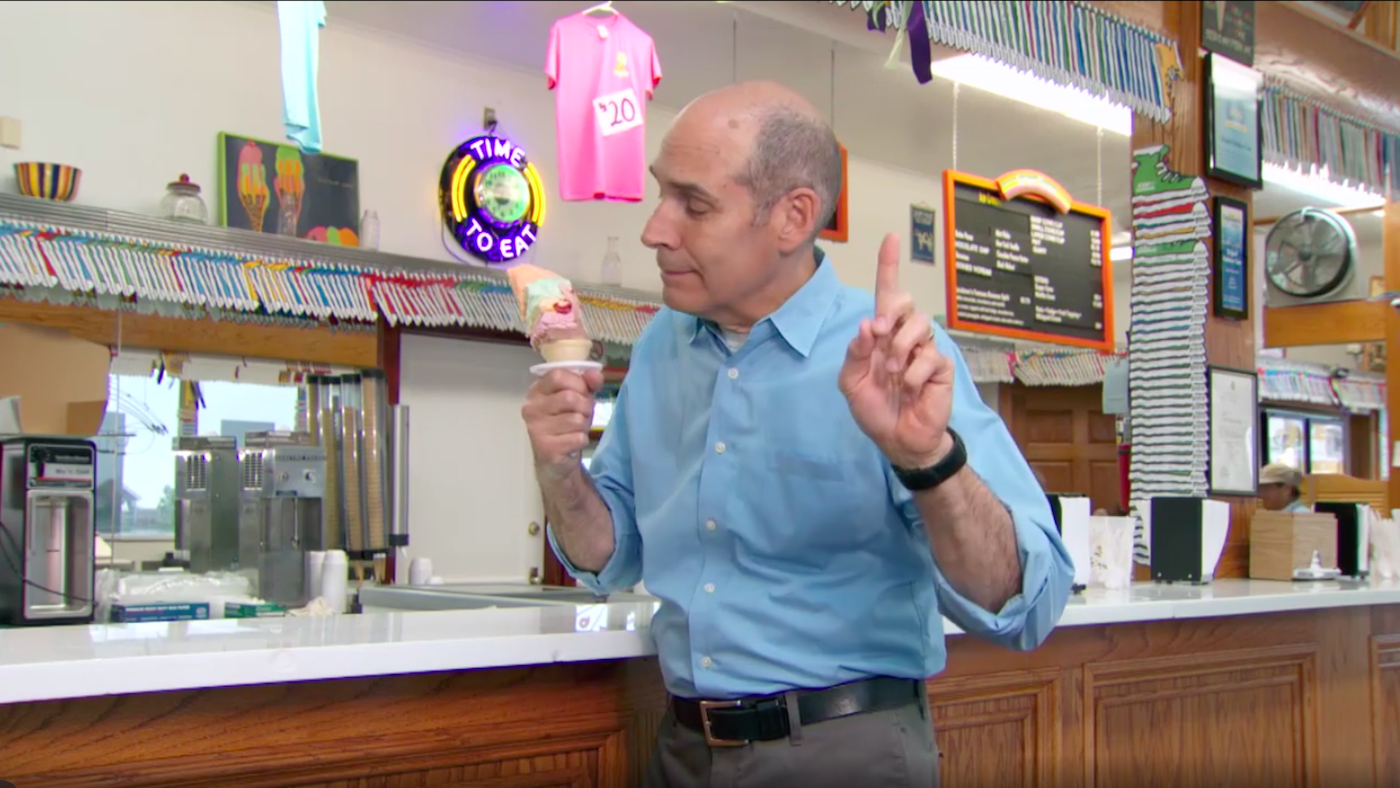
Plenty of American cities have iconic foods associated with them that tourists flock to and natives love (or love to hate). New York (and Montreal) have their bagels, Cincinnati its chili, Philadelphia its cheesesteak, St. Louis toasted ravioli. Chicago is no exception: deep-dish pizza, the Chicago hot dog, Italian beef, and Malort are all inextricably wrapped up in the city’s reputation and famously originated here, along with Chicken Vesuvio, flaming saganaki, and brownies. (You can find the stories of some of those dishes and many more in my The Foods of Chicago: A Delicious History, available to stream any time.)
But what about all the other foods that originated here but are less often found downtown or on lists of must-eat Chicago foods? Just think about that other type of Chicago pizza, tavern-style, which many locals probably encounter more often than deep dish. (“It’s the tourists who think this is just a deep-dish town,” food journalist Steve Dolinsky told Chicago Tonight. “The real Chicago-style pizza is what’s called tavern-style.”) Here are a few of my favorite Chicago food origin stories.
Jibarito
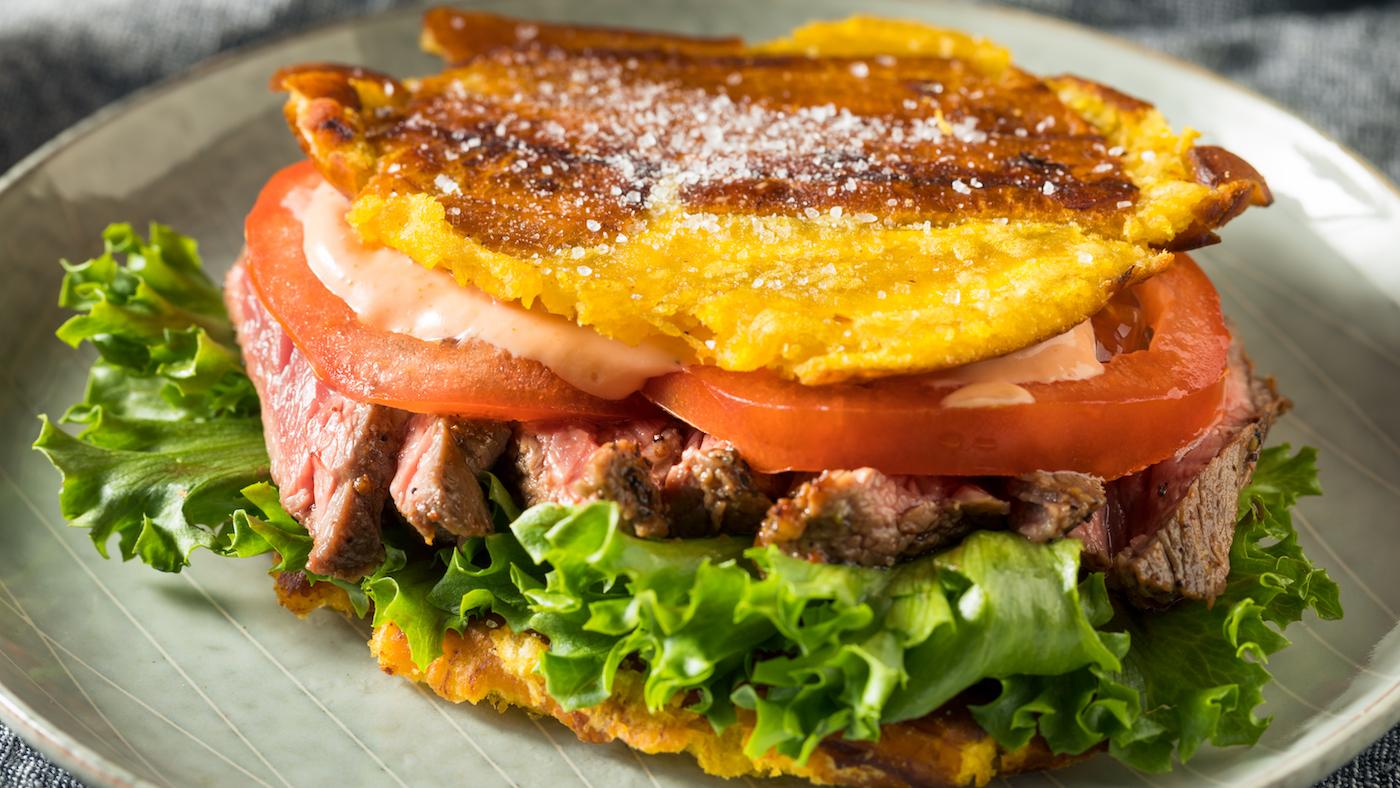 A jibarito uses a flattened, fried plantain to hold its fillings. Photo: iStock
A jibarito uses a flattened, fried plantain to hold its fillings. Photo: iStock
Puerto Rican immigrant Juan “Peter” Figueroa perfected a recipe for a sandwich made on fried, flattened plantains instead of bread, christened it “jibarito,” or “little hillbilly—a nickname for himself—and began serving it at his Humboldt Park restaurant Borinquen in 1996. Figueroa read about the sandwich in a Puerto Rican newspaper, but he was the one to popularize it in its canonical form featuring steak, mayonnaise, cheese, lettuce, tomato, and garlic oil. You can now find it served across the country, even in Puerto Rico.
Watch an animated explanation of the jibarito’s origins from The Great Chicago Quiz Show, a new season of which premieres in April.
Mother-in-law
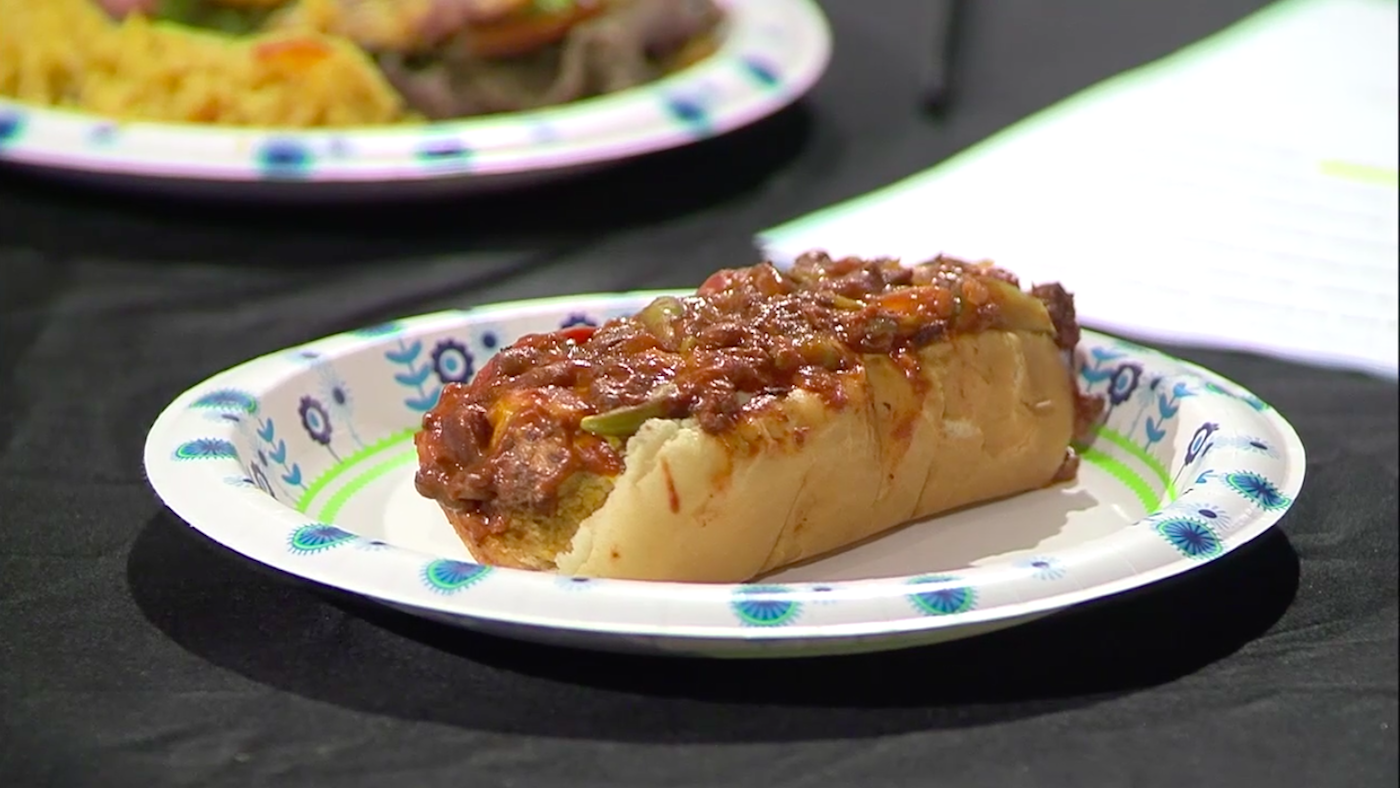 The mother-in-law is another unique Chicago sandwich. Image: WTTW News
The mother-in-law is another unique Chicago sandwich. Image: WTTW News
Another unique Chicago sandwich is the mother-in-law. Imagine a chili dog, but with a tamale nestled in the hot dog bun under chili instead of a sausage. Part of what makes this treat quintessentially Chicago is the tamale: it’s a commercial extruded Chicago-style or corn-roll tamale that bears about as much resemblance to a Mexican tamale as the mother-in-law does to a deli sandwich. Chicago-style tamales are typically made by Tom Tom Tamale (founded by three Greeks named Tom) or Supreme Tamale. And the mother-in-law’s name? According to The Chicago Food Encyclopedia, it’s said to come from the snack’s ability to cause indigestion—just like a spouse’s mother.
Pizza puff
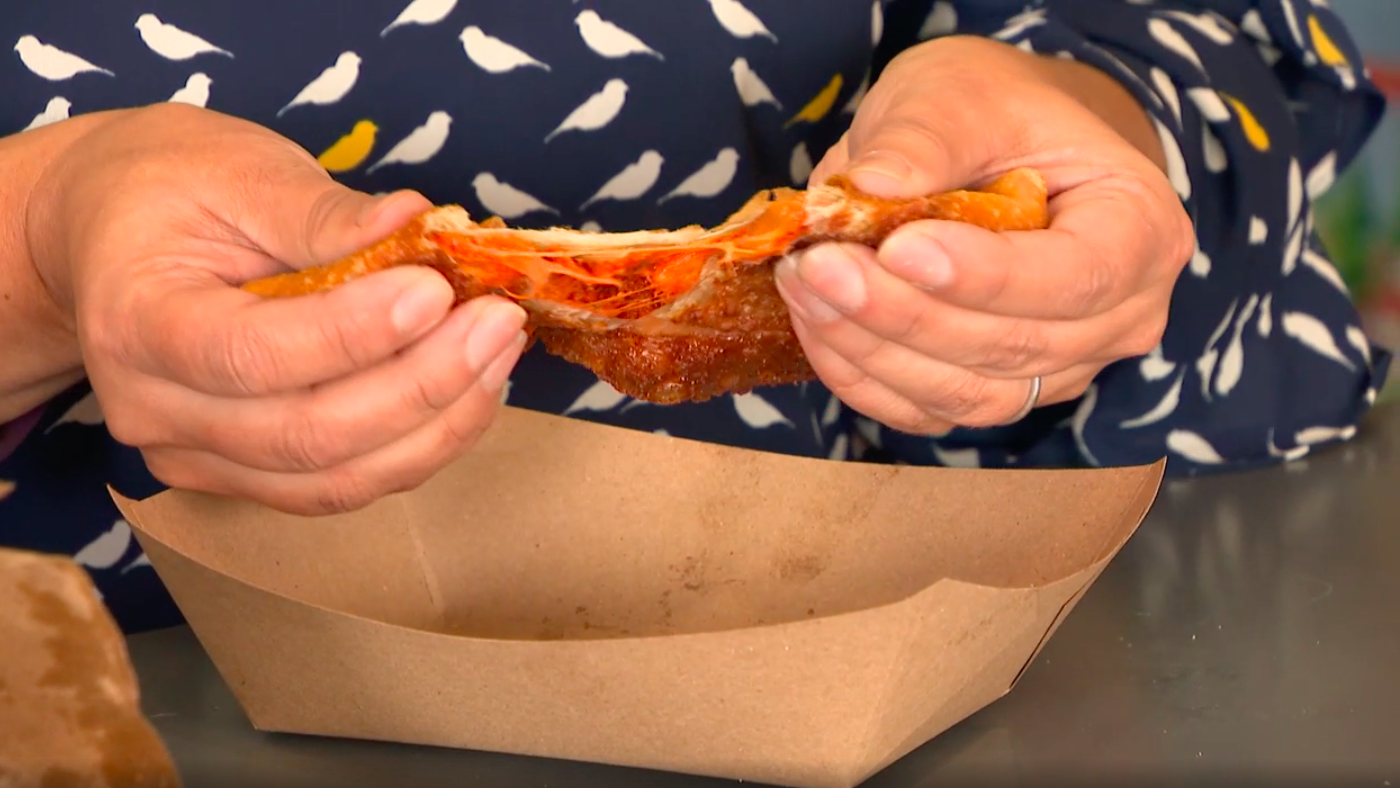 The pizza puff was invented by an Assyrian entrepreneur who borrowed dough from a Mexican friend to make an Italian-inspired treat. Image: WTTW News
The pizza puff was invented by an Assyrian entrepreneur who borrowed dough from a Mexican friend to make an Italian-inspired treat. Image: WTTW News
It’s a classic Chicago story of cultural mixing: an Assyrian entrepreneur borrows tortillas from a Mexican friend and the idea of calzones and panzerotti from his Italian neighborhood to create an entirely new delicacy: the pizza puff. Warren Shabaz’s grandfather owned a company that supplied those same Chicago-style tamales found in a mother-in-law to hot dog carts. When he took over, he and his brother used tortilla dough from their buddy Art Velasquez—himself a successful businessman whose company Azteca Foods helped bring commercial tortillas to the masses—folded it around a pizza-flavored filling, and deep-fried it. Decades after its introduction by Shabaz’s company Iltaco Foods in 1976, the pizza puff is a mainstay of hot dog stands and convenience store freezers around the city.
Processed cheese and its descendants, courtesy of Kraft Foods
Canadian immigrant J.L. Kraft began wholesaling cheese in Chicago from a horse-drawn wagon in the early years of the twentieth century. Back then, cheese posed difficulties for mass production, given that it could quickly rot due to the microbes that aged it. Kraft discovered that he could produce a shelf-stable, consistent cheese by sterilizing it with heat, adding an emulsifier to keep it from separating, and canning it. In 1916, he patented processed cheese, transforming the industry. (Two Swiss chemists had invented processed cheese a few years earlier, but Kraft was the first to patent it.) The U.S. Army bought more than 6 million pounds of processed cheese from Kraft to feed soldiers in World War I. Eventually, his company would introduce elaborations on processed cheese, from Velveeta to Cheez Whiz. (They also developed Miracle Whip and introduced it at Chicago’s 1933 Century of Progress world’s fair.)
Perhaps most lastingly popular of all was the innovative idea of creating a powdered processed cheese base to sell alongside pasta for a quick macaroni and cheese. Kraft debuted its boxed mac and cheese in 1937. Once again, a war helped boost sales, as rationing during World War II made the product alluring to consumers looking for a cheap, fast, and filling meal.
After more than a century and various mergers, Kraft Heinz is now the third-largest food and beverage company in North America and retains headquarters in Chicago.
Jays Potato Chips
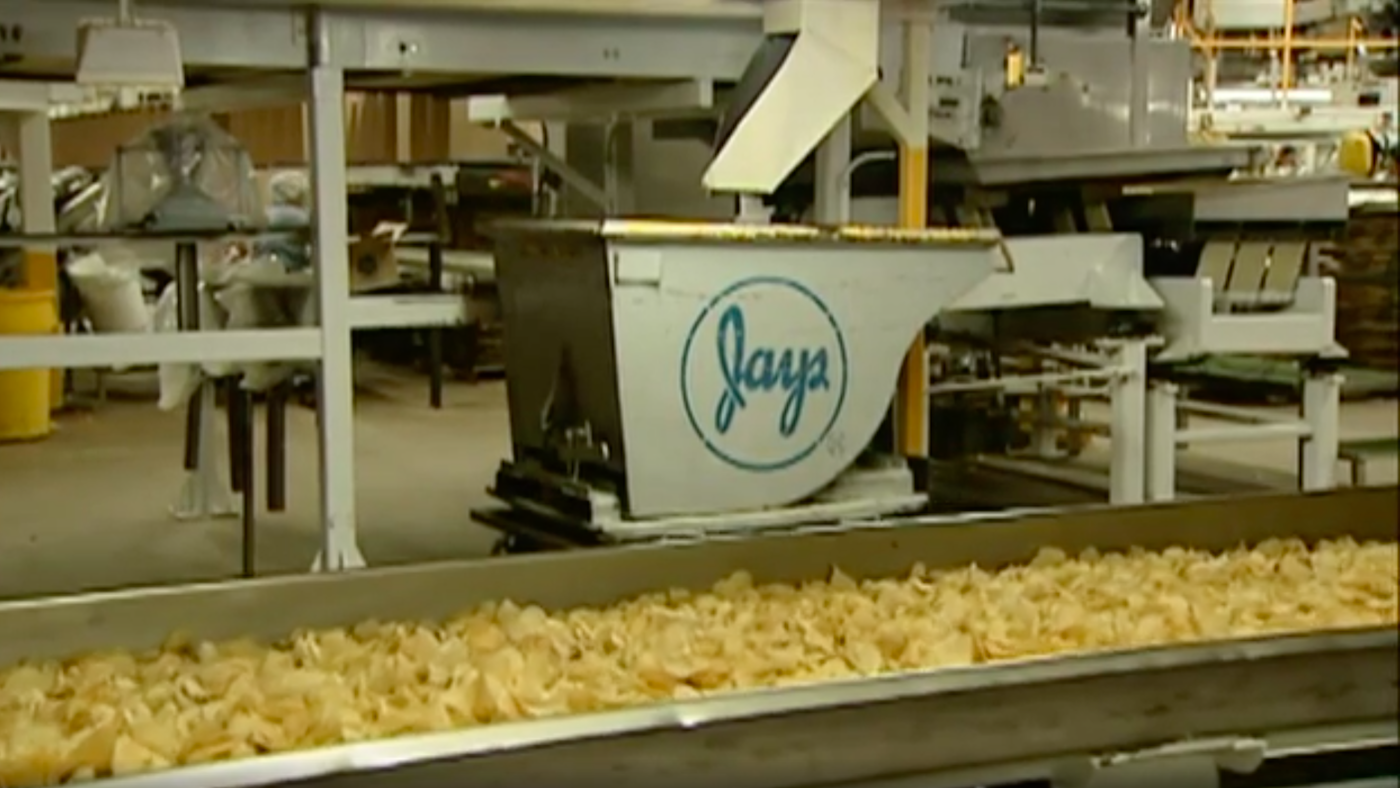 Archival footage of chips being made in the Jays factory. Image: Jay's Chicago
Archival footage of chips being made in the Jays factory. Image: Jay's Chicago
Jays Potato Chips may no longer have a factory on the South Side, but its Chicago origins run deep. In 1927 Minnesotan Leonard Japp began selling pretzels and nuts to Al Capone, for his speakeasies. After Capone tasted potato chips in Saratoga Springs, New York, where they had been invented, he urged Japp to begin making the fried snack. When anti-Japanese sentiment surged following the attack on Pearl Harbor in December, 1941, Japp’s brand name became a racist pejorative, so he changed the name to Jays.
Sweet Baby Ray’s
Chicago-style barbecue may not be as well-known as that of other places in the U.S., but it’s distinctive nonetheless. In its most emblematic form, developed by African Americans on the South Side, it features pork ribs and rib tips smoked in “aquarium pits,” a glass box filled with smoke via a chimney attached to a brick fire pit below it. (The style is exemplified by Lem’s Bar-B-Q on 75th Street, which supposedly has the largest aquarium smoker in the city.)
Sweet Baby Ray’s barbecue sauce was made for ribs. After brothers Dave and Larry Raymond came in second in the 1985 iteration of the Royko Ribfest, which was dreamed up by legendary newspaper columnist Mike Royko, Dave decided to bottle their sauce and sell it from the trunk of his car. Although no longer made in Chicago, Sweet Baby Ray’s was the most popular barbecue sauce in the country by 2014, according to the market and consumer data provider Statista.
Rainbow Cone
 A Rainbow Cone features layers of chocolate, strawberry, Palmer House, pistachio, and orange sherbet. Image: From Chicago's South Side
A Rainbow Cone features layers of chocolate, strawberry, Palmer House, pistachio, and orange sherbet. Image: From Chicago's South Side
The Sapp family opened the Original Rainbow Cone in 1926, when the surrounding Far South Side was mostly just prairie, to serve city folk on weekend excursions to cemeteries. It’s still family-owned, and has become a city institution. Its eponymous treat is an ice cream cone with layers of chocolate, strawberry, cherry and walnut Palmer House, pistachio, and orange sherbet—and you can now find it not only at the original Beverly store but also at Navy Pier and in suburban Lombard and Darien.
Malted milkshake
The malted milkshake is the result of two Chicago products: Walgreens and malted milk. Charles R. Walgreen opened his first drugstore in 1901 on the South Side. James and William Horlick concocted a dried whey and malt powder as a nutritional supplement to be mixed with milk in the 1870s for their Chicago-based J & W Horlick’s Food Company. (Just like that powdered processed cheese later developed by Kraft for boxed macaroni and cheese!) Because fresh milk could not always be found in cities, William developed powdered milk to combine with the malt powder, creating Horlick’s Malted Milk.
In 1922, Ivar “Pop” Coulson took Horlick’s Malted Milk and added it to vanilla ice cream along with chocolate syrup and milk while working at a Walgreens soda fountain. Malteds became popular across the country, and can still be found today at old-school hot dog stands like Superdawg.
Twinkie
Believe it or not, this notoriously shelf-stable food owes its existence to seasonality. The Continental Baking Company made sponge cake for strawberry shortcakes, but only when strawberries were in season. To utilize the idle cake molds throughout the whole year, plant manager James Dewar devised a banana cream to fill the cake. He also supposedly came up with the name after seeing a billboard for Twinkle Toe Shoes.
During World War II, bananas were hard to come by—partly because banana boats were requisitioned for the war effort. So the banana cream was replaced with vanilla filling to create the Twinkie we know today. Continental Baking Company was eventually bought by Hostess. And James Dewar? He lived to be 88—eating three Twinkies every day.



